Dr. Rohit Ramchandani, public health thought leader-instigator of global change
“We can do things far more effectively if we work together.”
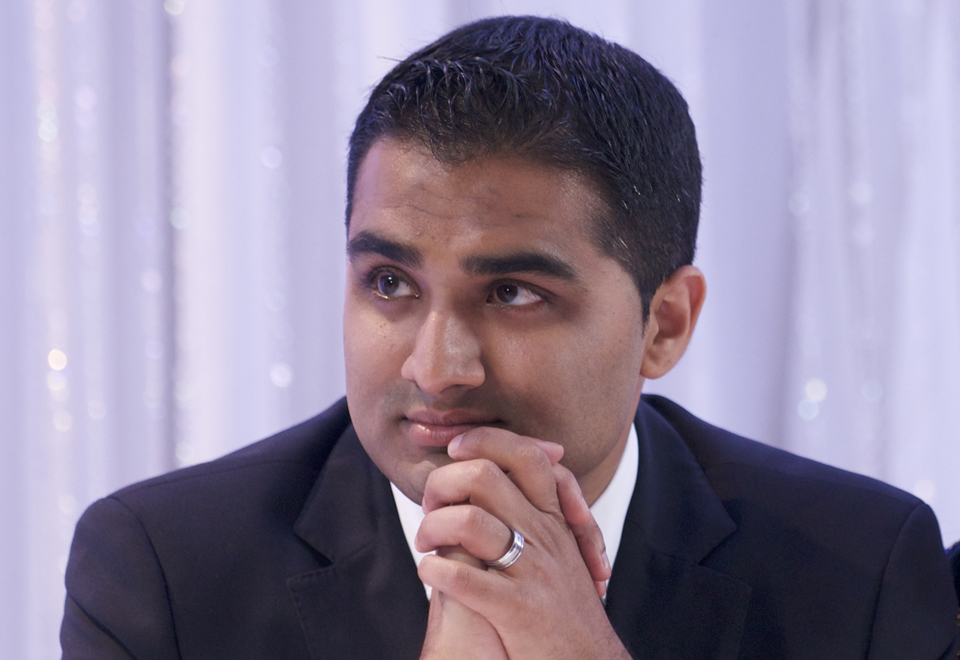
If you could turn back the clock 30 years or so and take a peek at the walls of Rohit Ramchandani’s childhood bedroom, you might be surprised that he didn’t become a primatologist. Stuffed monkeys, apes and other plush primates camped out on bookshelves and along his bed, and the one-and-only Dr. Jane Goodall graced the poster over his desk.
“As a child, I was very interested in primatology and chimpanzees,” he says. “Jane Goodall was a big inspiration growing up. I’ve always been intrigued and inspired by people who are doing things differently and are focused on trying to make a difference in the world—and going off the beaten path to do it.”
Rohit may not have tread directly in Ms. Goodall’s esteemed footprints; instead, he became a leading global public health advisor with a slew of honours to his name (including a 2012 Grand Challenges Canada Rising Star in Global Health award, the 2009 University of Waterloo Young Alumni Award and being an alumnus of the 2012 Governor General’s Canadian Leadership Conference). But he did take her lead by charting his own path to have a lasting, positive impact on the world.
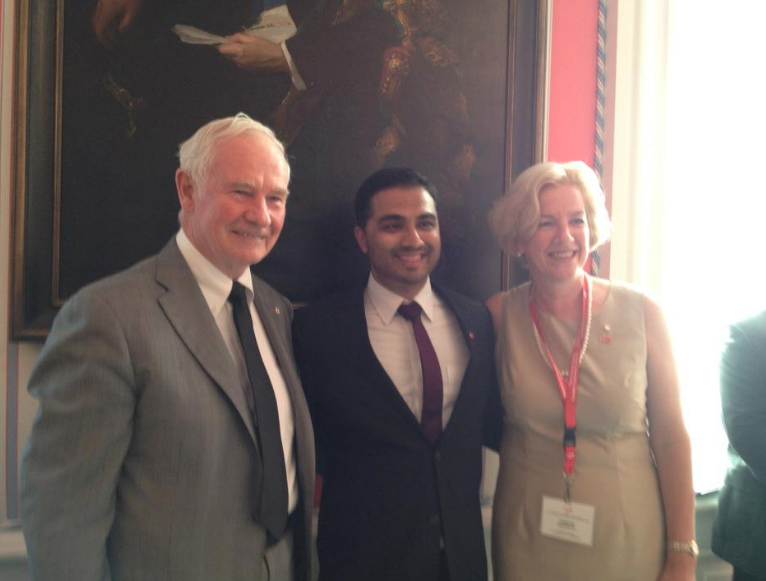
From left: Governor General David Johnston, Rohit and Annette Verschuren (Chancellor of Cape Breton University) at the Governor General’s Canadian Leadership Conference, Rideau Hall, Ottawa, Ont., 2012
Answering the call to global public health
From a young age, Rohit has closely observed his surroundings, seeing where and how he could make a difference as an adult.
Born and raised in Pierrefonds, Quebec on Montreal’s West Island, he and his younger sister, Roshni, saw a lot of the world. They moved across Canada quite a bit, from Montreal to Vancouver, B.C., then to Calgary, Alberta and Toronto, Ontario. The family also travelled to India, where Rohit’s parents lived until they immigrated to Canada in the 1970s.
“I grew up seeing poverty because it’s so prevalent in India,” he says. “There was this contrast between what I was living back home and what I was seeing during my travels. That left a lasting impression on me, and I knew I wanted to make a difference… Health really seemed like a logical way to address some of those things.”
By the time he was a student at Aurora High School, in the Greater Toronto Area (GTA), he had set his sights on medicine. When he graduated in 2000, he began pursuing a BSc in health studies and gerontology at the University of Waterloo, still thinking of himself as a premed student. But once he was there, he discovered a different discipline altogether: public health.
“Instead of focusing on the individual after the disease is in place, emphasis is placed on prevention as well as treatment, and on (the question of) how to change the health of thousands or millions of people at a time,” he says. “It gave me a broader, systems-based, more holistic perspective on health.”
In the summer after his second year at Waterloo, he and his classmate Jon Chow joined Youth Challenge International and travelled to Guyana to work on a public health project. They served as community health educators in three very rural communities within the equatorial rainforest, running workshops on waterborne illnesses, nutrition, HIV and AIDS. The experience was transformative, offering a real-world introduction to global health—including its great challenges but also the many great opportunities to help others.
“You look around the world today and you see that there’s just this massive imbalance,” says Rohit. “Nowhere, I think, is that more evident than when you look at the health status of people around the world. When you consider our advancements in information, communication and technology, our rate of progress in these areas has been exponential. But when you look at our advancement in the area of improving human quality of life, it just hasn’t kept pace. We’ve made a lot of progress but not nearly at the same rate. So I saw that as somewhat of a calling for me.”

Rohit shaves by the water on the Demerara River, Guyana, 2002
When Rohit and Jon went back to university after that defining summer, they felt compelled to create an inlet for others to share in those kinds of experiences. They founded the University of Waterloo International Health Development Association to expose students to issues relating to international health and development, and to provide an opportunity to get involved in projects like the one in Guyana.
“It’s very easy for us (in Canada) to be insular and look inward and lose sight of our connectivity,” says Rohit. “To really understand the kinds of challenges that people are facing around the world, you have to go in and experience it firsthand. That was really the impetus for the organization.”
Just two years later, their inaugural project got off the ground: an internship with the World Health Organization, through the LV Prasad Eye Institute (LVPEI). So, in 2004, fresh off completing his undergrad, Rohit and two other Waterloo students travelled to Hyderabad, India to study how the world-renowned eye hospital had devised a model that delivered top quality healthcare while serving the needs of the entire population, regardless of their economic status.
“Studying that model helped me understand what a health system can do,” says Rohit. “LVPEI had implemented a financing mechanism of cross-subsidization where people who could afford to pay for the services would, and for those who couldn’t, their services were subsidized and they’d get access for free. Services were provided at multiple levels, right from the household all the way up to a tertiary care centre of excellence.”
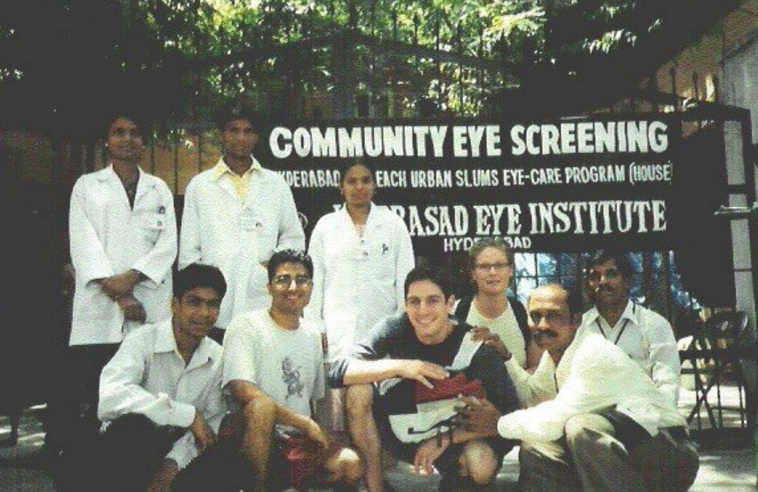
Rohit (front row, second from left) on the LVPEI internship, Hyderabad, India, 2004
LVPEI’s model became the basis of his thesis for his Master of Public Health degree, which he completed at the Boston University School of Public Health in 2006. He then moved back to Toronto to work as a management consultant for Accenture, which had just launched a healthcare and life sciences practice. There, he worked with multinational pharmaceutical companies and large hospital networks in the GTA, developing IT solutions to help reduce wait times and enable healthcare professionals to make informed decisions about how they allocate resources.
As rewarding as work was with Accenture, consulting on health issues in high-income countries eventually left Rohit feeling the call to go “back to the wild”—to return to the field and address challenges facing the developing world. In his words, “Issues of inequity, poverty, access and premature mortality.”
In 2007, he moved to Ottawa, Ontario to work as a senior health advisor at the Canadian International Development Agency (CIDA), now Global Affairs Canada. He collaborated on a number of multinational global health initiatives, advising on investments in areas such as tuberculosis, malaria and Canada’s work on the G8 Muskoka Initiative, leading the way in maternal, newborn and child health.
Highlights of his time at CIDA include:
- Being an ad-hoc committee member of the Affordable Medicines Facility – malaria, representing the Global Fund constituency of Canada, Germany and Switzerland.
- Playing a key role in establishing the global TB Reach Facility with the Stop TB Partnership, seeking to find innovative approaches to increase case detection and get people on treatment.
- Serving as a steering committee member of the Global Health Research Initiative, a collaborative Government of Canada research funding partnership focused on low- and middle-income countries.
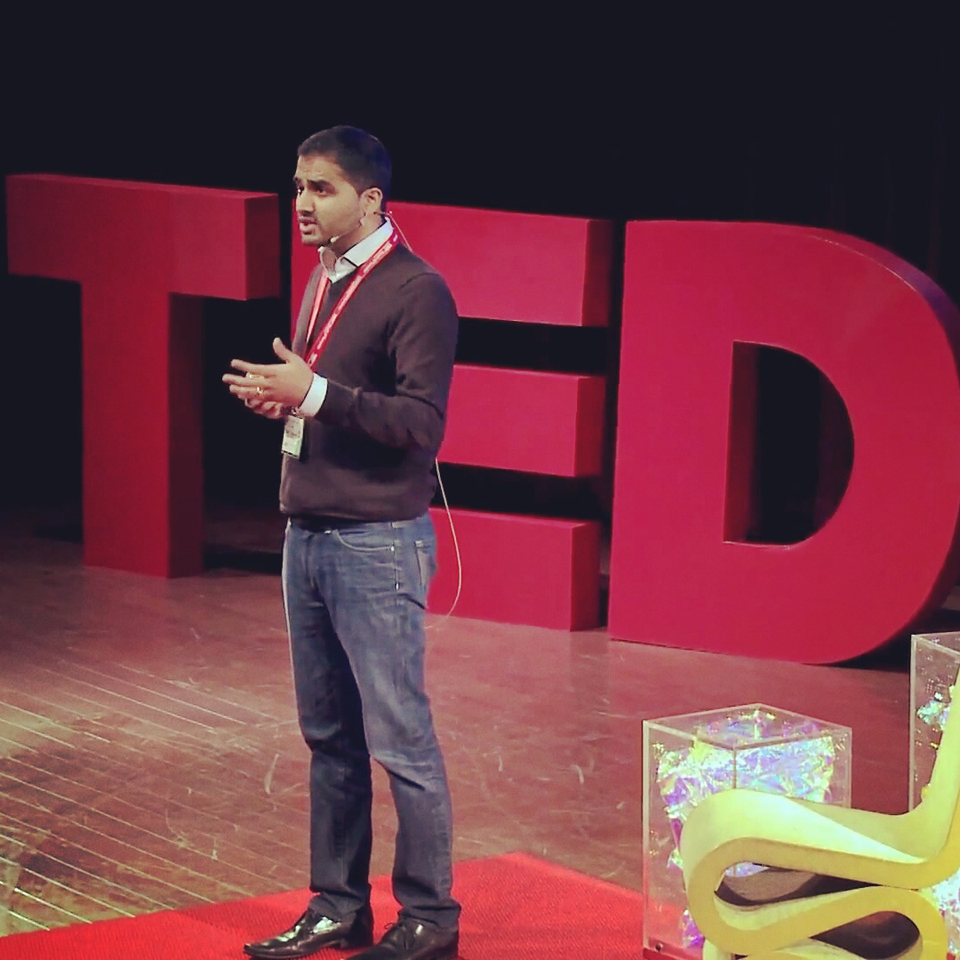
Delivering a TEDx Talk, Toronto, 2012
Living the ColaLife
After three years and many more initiatives at CIDA, Rohit began his Doctor of Public Health at the Johns Hopkins Bloomberg School of Public Health, which he completed in 2016. His dissertation topic focused on global health delivery and implementation science: Emulating Commercial, Private-Sector Value-Chains to Improve Access to ORS and Zinc in Rural Zambia.
“One question that had been plaguing my mind, and had been discussed in public health circles for some time, was: ‘Why is it you can go to the most rural remote parts of the world and find a bottle of Coca-Cola sitting on the shelf, while in those same places, children are dying from preventable diseases like diarrhea because they can’t access simple medicine?’” he says. “There was something to learn there, so I decided that was the question I would explore in my dissertation research.”
When he dug into the research, he found that while almost no one else had posed that question formally, there was one (very small) group that had. Simon and Jane Berry, an industrious couple in the U.K., were running ColaLife, which was at the time a Facebook page that probed the very issue Rohit was exploring. He joined them as ColaLife’s public health advisor and principal investigator, and together, they worked to understand why so many children were dying from diarrhea—a totally preventable death that annually claimed the lives of nearly 700,000 kids under age five—and what they could do about it.
To answer that question, Rohit and the Berrys focused on rural communities in Zambia, where children often got diarrhea because they didn’t have access to safe drinking water, and died of dehydration because they couldn’t access the right treatments. “As of 2004, the globally recommended treatment for diarrhea is oral rehydration solution (ORS) combined with zinc,” says Rohit. “But more than 10 years later, less than 1% of children under five with diarrhea have access to this combination therapy. We wanted to look at how we could change that, starting with our intervention (areas) in Zambia.”
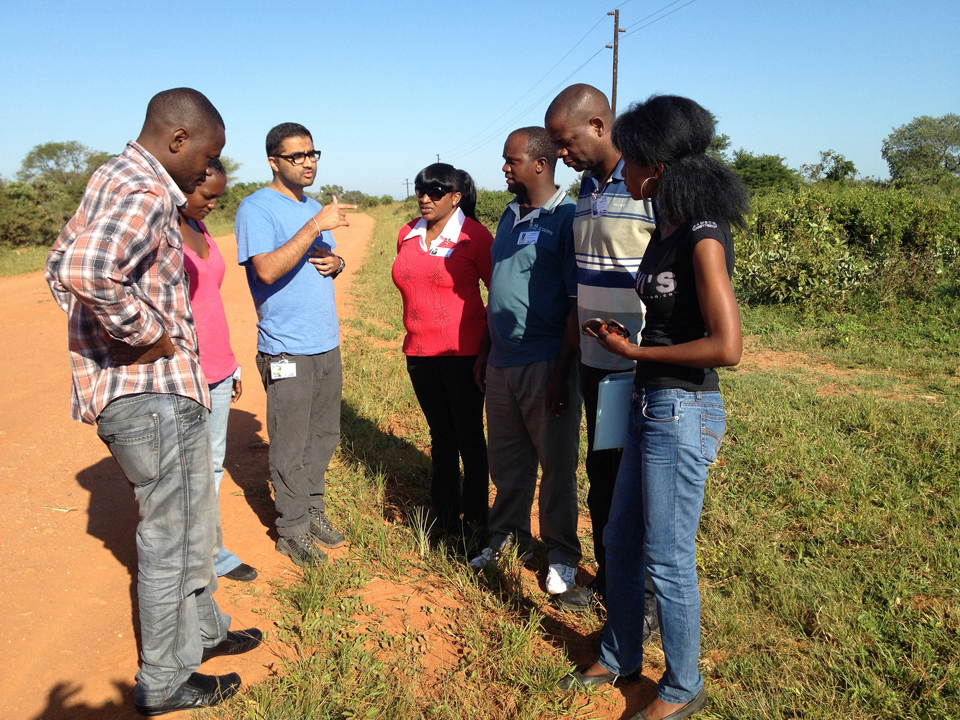
Rohit (second from left) briefing his local field research team in Zambia
The public sector was managing to distribute medicines up to the district level. But reaching rural communities on a regular basis posed a challenge. Mothers had to walk long distances to reach the health centres that were the only places carrying the treatments, and often arrived to find that the centres were out of zinc, which wasn’t being manufactured in Zambia.
There were other hurdles, too. Standard treatment being used worldwide included ORS sachets that had to be mixed with 1L of water and consumed within 24 hours. But most children under five years of age can’t drink that much in a day. And the families had no means of accurately measuring the right amount of water. On top of that, the sick children didn’t like the taste and colour of the ORS and zinc available from the health centres.
In short, the standard sachets weren’t appropriate for household use.
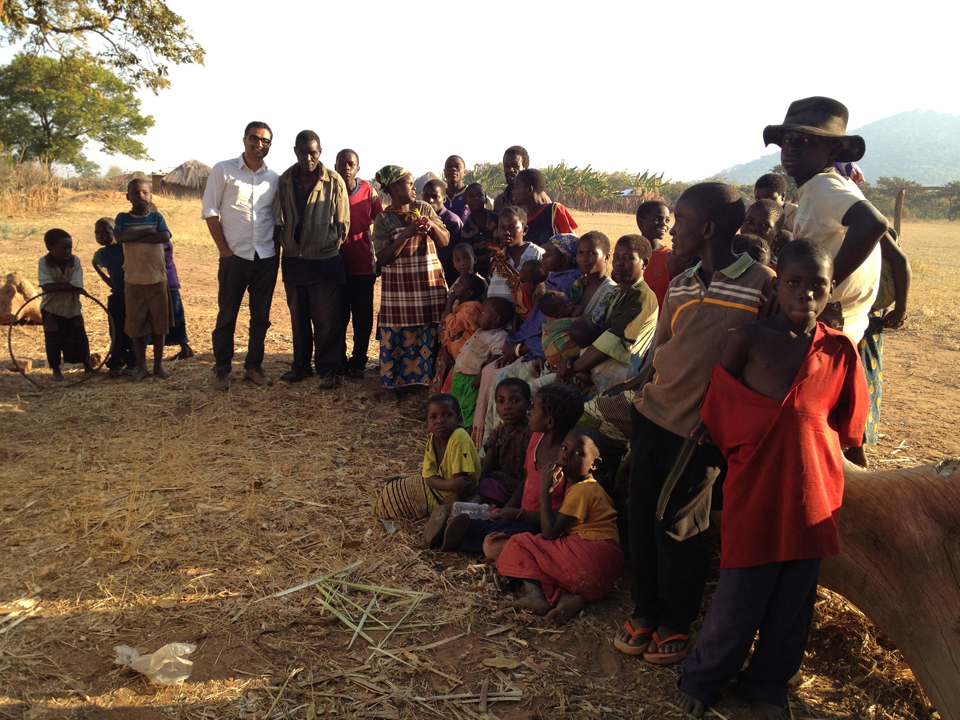
Working with community members in Katete District, Eastern Province, Zambia, 2012
What’s the problem?
“Einstein said, ‘If I had only one hour to solve a problem, I’d spend 55 minutes defining it and five minutes solving it,’” says Rohit. “We don’t often do that. Historically, a lot of development initiatives have gone in with a top-down approach, dictating what they think should be done and implementing it in a way that’s separate from the end user’s reality.”
Rohit wasn’t about to ignore history’s lessons. He and the ColaLife team adopted a human-centred design approach that would accurately reflect the needs of the end users—the mothers and children in rural Zambian communities who were using the treatments. The result was the Kit Yamoyo (“kit of life”), which offered many improvements over the standard treatment.
The Kit Yamoyo featured packaging that doubled as a measurement vessel so families could easily prepare the solution in the correct concentration. It also included smaller sachets of ORS, which better suited the volume that children could actually consume. And the ORS mixture was flavoured and coloured orange so kids would be more likely to drink it.
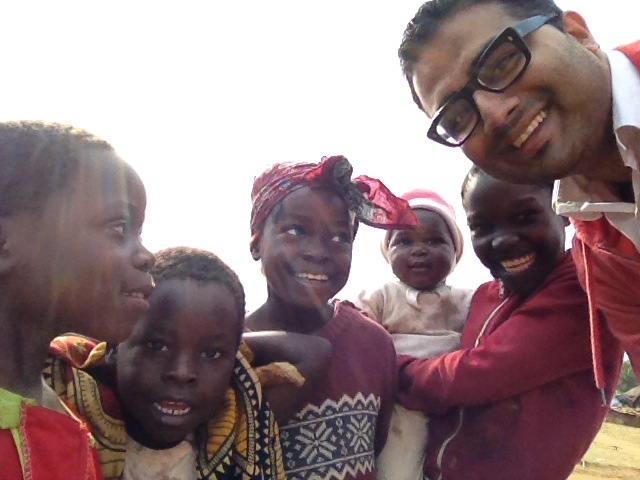
With children from Katete District, Eastern Province, Zambia, 2012
As well, ColaLife and its local pharmaceutical partner, which was already manufacturing the ORS, partnered with the Zambian Medicines Regulatory Authority to begin producing zinc within the country, to ensure its availability. With that supply chain established, the full treatment was locally manufactured, and ColaLife was able to co-package ORS and zinc in the Kit Yamoyo.
Still, the question of accessibility remained—as did the initial question Rohit set out to ponder in his doctoral thesis. Why was Coca-Cola so readily available in even the most remote communities when basic medicines weren’t? The ColaLife team decided to capitalize on Coca-Cola’s business model, applying similar principles to the public health sector: they created a product that met consumer demands while turning a profit.
Initially, they even piggybacked on the Coca-Cola supply chain, nestling treatment packages between the bottlenecks in the cola crates. It was a simple yet ingenious idea, and one that garnered many accolades. The ColaLife model won a 2013 DuPont Award for Packaging Innovation, a 2013 London Design Museum Product of the Year award and a 2014 Transformational Business Award from the Financial Times and International Finance Corporation. It was also named among the top 10 breakthrough Innovations for 2015 by PATH.
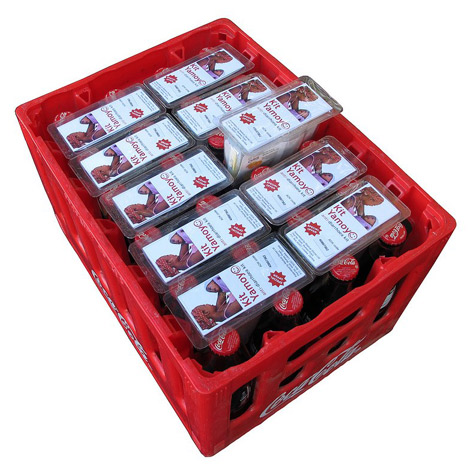
ColaLife and the Kit Yamoyo had made significant gains in the field of public health. But that didn’t mean Rohit and the Berrys were prepared to coast on their success. “Innovation is a process of constant evolution and adaptation,” says Rohit. So they continued to evolve and adapt.
As Rohit continued to analyze data from the Kit Yamoyo usage, he found that only a small percentage of retailers were making use of the piggybacking model. The vast majority were buying the kits in bulk and putting an entire box on the back of their bicycles to sell within their communities. “Knowing we didn’t have to fit the kits into the cola crates freed us up in many ways,” says Rohit.
ColaLife moved away from the initial “awkwardly shaped container” that fit between the necks of crated bottles and adopted a lower-cost packaging system that could be manufactured locally, rather than imported from the U.K. as it had been previously. “Our packaging is now almost 100% locally manufactured,” he says. “That creates jobs and does all those other things that you want an overall market-based solution like this to do.”
The results have been phenomenal. In one year, ColaLife increased coverage of ORS and zinc from less than 1%—the global average—to 46% in their intervention districts in Zambia. Their design also improved proper preparation of ORS from 60%, as seen with the standard 1L sachets, to 93% with the Kit Yamoyo.
The team is currently in the process of a national scale-up, and Rohit is very optimistic about their prospects. “Because we’ve built on a private sector model, the small amount of money required to purchase the kit comes from end users,” he says. “The manufacturer produces it and then sells to wholesalers, who sell it to rural retailers who then use bikes, motorcycles or ox carts to transport it across the ‘last mile’ to sell for a small profit.”
Rohit acknowledges that there is still a segment of the population that lacks the means to access it, even if at a low cost. “But our approach facilitates access for a large proportion of people who would otherwise not get the treatment,” he says. And for those who simply can’t afford to pay for it, ColaLife has mechanisms in place, like donated vouchers, to get them the treatment they need.
The national scale-up also includes a public sector version of the kit, whereby the Zambian Ministry of Health procures co-packaged kits using the ColaLife design and makes them available in rural health facilities on a trial basis. “This further helps ensure sustainability by providing an anchor client for the local manufacturer,” he says. “The beauty of this model is that it’s sustainable.”

Training a team of enumerators in Lusaka, Zambia, 2015
Channeling the power of youth
Since he was a child, Rohit has been looking for ways to improve lives in a lasting, meaningful way. Now, he has something—someone—driving him to make an even bigger difference: his own child, two-year-old Ayaana with his wife of five years, Dr. Aanchal Sharma.
“When my daughter came along, she brought a whole new perspective to my work in child health,” he says. “I see how much joy she brings to me and my wife and our families, and I think about how lucky we are to have her. The thought of parents and people in the world not having the ability to properly care for their children, or to lose their kids to preventable diseases—it shakes me up. Ayaana is a constant source of inspiration for me.”
To Rohit, one of the most important means of securing a better future for us all is by educating and empowering the next generation of global health professionals. “I want to make sure people understand how to think through a lot of these challenges and how to move through them, making sure they have the methods and tools to do that effectively.” He does that in many ways: by leading workshops and delivering talks at conferences, and through his work at the University of Waterloo School of Public Health and Health Systems, where he is currently Adjunct Assistant Professor.
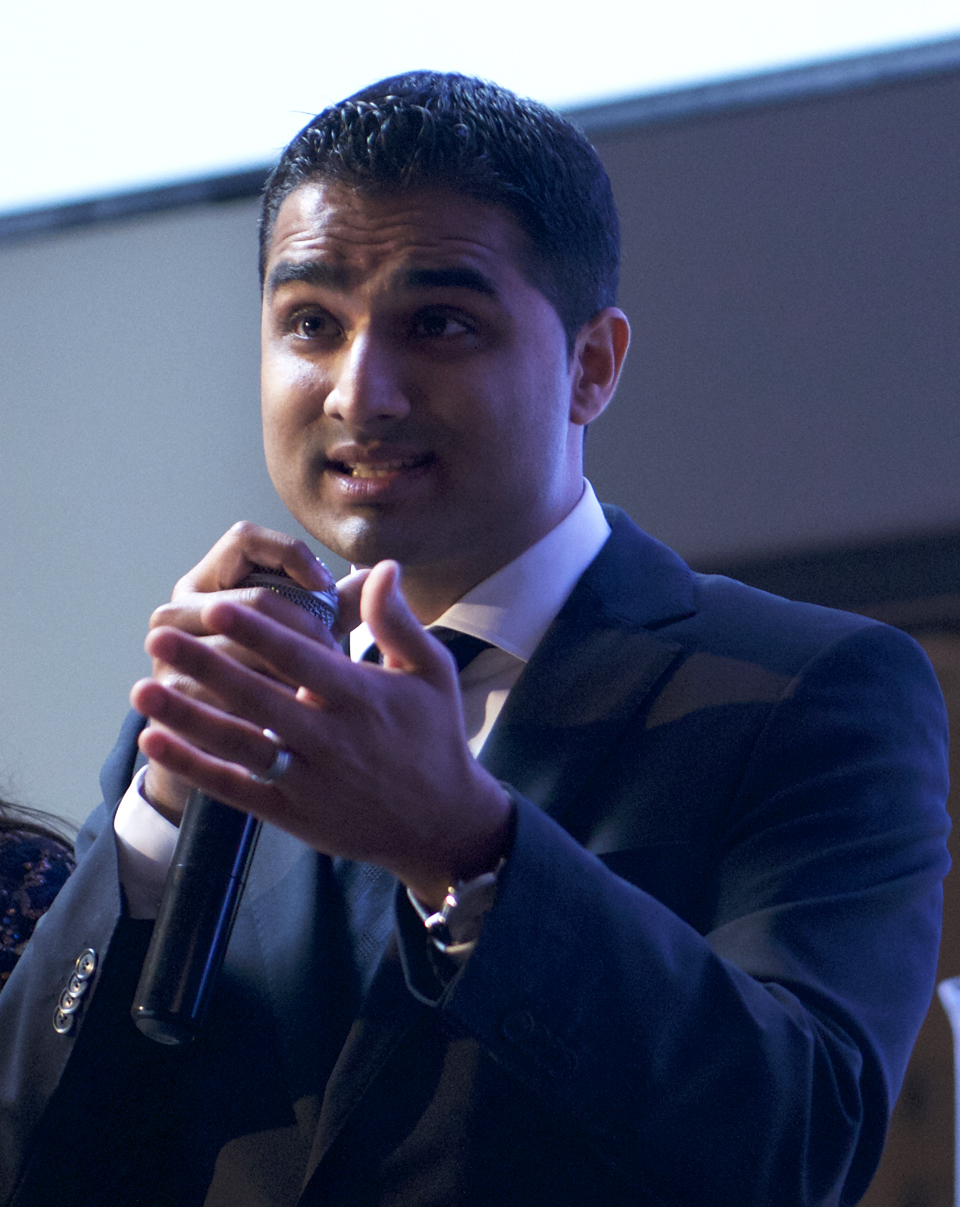
Rohit has also teamed up with his very first source of inspiration to help nurture “the next generation of Janes.” He was asked to join the Jane Goodall Institute of Canada board of directors after giving a talk at the 2013 Canadian Conference on Global Health; the organization wanted his expertise as they shifted focus to integrated conservation, looking at people as well as animals, and their shared environments. One of the projects he’s helping with is their Roots & Shoots program, which supports students in identifying challenges and developing solutions within their own communities.
“What the Jane Goodall Institute does is very forward-looking,” he says. “It’s how we should all be looking at the world now, because understanding how things are connected—animals, people, the environment—and looking at things from a systems perspective goes broader than just health. It sheds light on the connectedness between all of these different things: what our responsibility is as a human species, as stewards of this planet, as stewards of our own well being and health, and of our shared resources.”
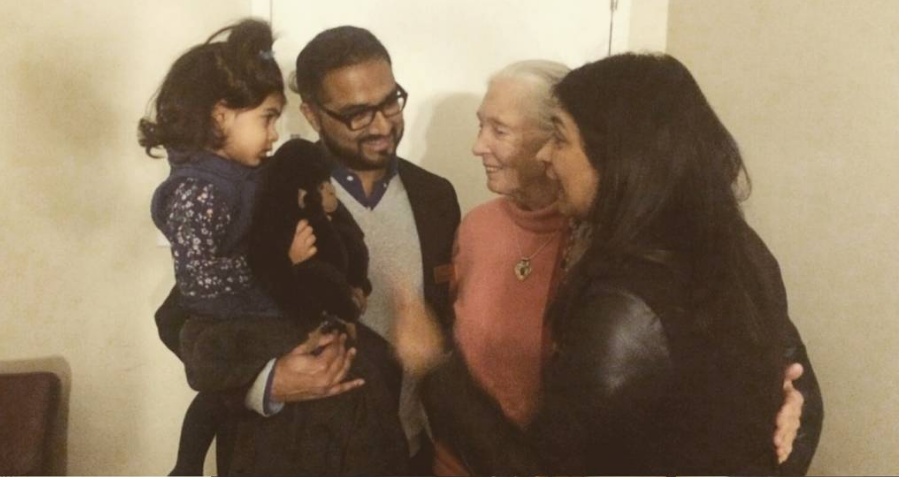
Rohit introducing Ayaana and Aanchal to Jane Goodall
Antara and beyond
Back in 2010, the same year Rohit partnered with the Berrys on ColaLife—and the year he joined the United Nations Innovation Working Group, by the way—he founded Antara Global Health Advisors. As CEO, he leads the global health advisory firm in helping organizations around the world improve lives, increase equity and prevent needless loss of life.
“I’ve had the opportunity to work in global health from a variety of perspectives and sectors,” he says. “What often prevents a lot of solutions from advancing is those sectors is an inability to communicate effectively with one another. But we can do things far more effectively if we work together.
“When you look at the area of public-private partnership—which is something that ColaLife exemplifies—by identifying unlikely alliances, you can really address challenges far more effectively by taking a multi-pronged approach and using the strengths of each sector to the best of their ability. That’s what Antara was developed to help do.”
Today, Rohit is turning the clock forward, at least in his mind, looking ahead to what more good he can do with the knowledge he’s gained to date. Through Antara, he is keenly focused on developing a global health innovation lab that will support initiatives like ColaLife’s Kit Yamoyo—projects that seek to first understand the challenges and problems, and then to develop tested, scalable solutions that will benefit people across the globe.
“At the highest level,” he says, “my ultimate objective is to help create a more balanced world.”
* * *
For the latest on Rohit, follow @AntaraInsight on Twitter and ramchandani_rohit on Instagram. You can also email [email protected].
To learn more about his work, watch the documentary The Cola Road and Rohit’s TEDx talk on revolutionizing global health.
Thank you to Ottawa’s Wing-Leung Chan for nominating Rohit as a Kickass Canadian.
 Kickass Canadians
Kickass Canadians
Great to learn about individuals coming together to see their novel ideas come to fruition for the betterment of our world. I have found this inspiring, it will help me look forward in my endeavors in similar avenues.
Douglas, glad you found the article, and inspiration within it. Rohit and his partners are doing wonderful work. They continue to inspire me! Good luck with your initiatives.